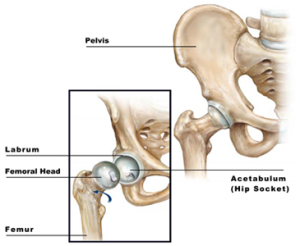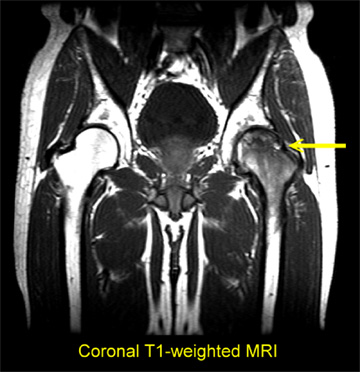Avascular Necrosis (AVN) is an unfortunate disease where the blood supply to the hip bone (femoral head) is disrupted with loss of bone integrity and eventual collapse of the femoral head and joint. 
Trauma, use of steroids, alcohol abuse, damage from radiation, high blood pressure and sickle cell anemia have all been identified as causative factors. Unfortunately the cause is often never identified. AVN is also known as osteonecrosis, aseptic bone necrosis and ischemic bone necrosis. It affects people between 30 and 50 years of age.
Diagnosis is typically made by MRI which demonstrates areas of bone necrosis. Collapse of subchondral bone is referred to as a crescent sign and is indicative of advanced disease.
The most common treatment of avascular necrosis of the femoral head is total hip replacement. Other treatments include core decompression, where the internal bone pressure is relieved by drilling a hole into the head of the femur. Gangji demonstrated that injection of bone marrow mononuclear cells can reduce the progression of the disease when performed during the early stages of AVN. Centeno et. al., in a single case study demonstrated articular surface regeneration following the intra- articular injection of bone marrow cells.
Combining bone marrow cells with stem cells is new novel technique. The Centeno-Schultz Clinic offers a needle-in, needle-out treatment with mononucleated bone marrow cells alone or in combination with expanded mesenchymal stem cells for treatment of early stage avascular necrosis.
